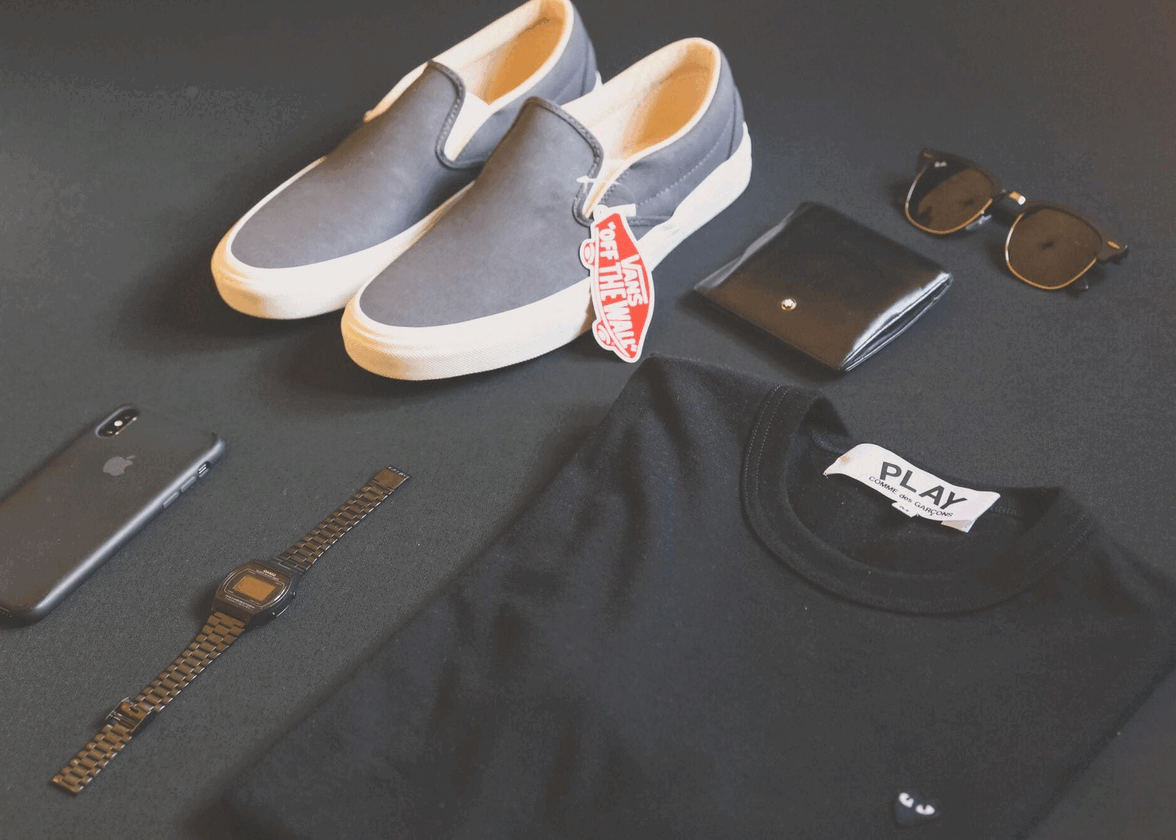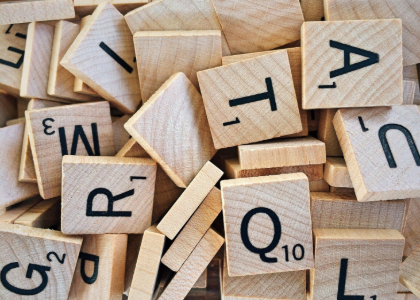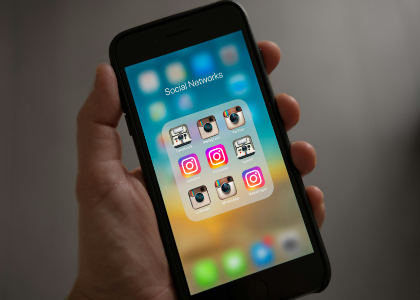Blog

How Can I Protect my Brand and Logo?
Branding and logo creation form the core of any business. It helps build a unique identity, a communication style, and a positive image of the organization. It is an intangible reputation asset that strengthens the positive perception of your brand in the minds of the consumers. Building a memorable brand must ensure that it is protected at all costs. A brand’s identity can be stolen and misused to represent values that do not match the business’s personality. A brand protection exercise is essential to safeguard the market reputation of a business built with experience, effort, and love.
What is a brand?
To begin with, a brand is a blueprint created to represent the core elements of any business. These elements could include:
- The relationship it has or wants to build with consumers
- An agreement concerning the values that a brand upholds and exercises
- The nature of the business
- The distinctiveness of the offerings, visuals, or communication style of the brand that helps it stand out in the market
Why do you need to create a brand for your business?
Branding is critical to any business that intends to be intensely involved, considered, and relatable to consumers. A great brand is more than just the products and services a business provides. It’s a feeling. Branding lets your clients and consumers know exactly what to expect from your organization. It is a perpetual process that evolves with the needs of consumers, markets, and businesses.
Branding can increase the value of any business over time and build consumer loyalty. For example, whenever people look at any branding from Coca-Cola, they relate it with the feeling of happiness. It’s not the drink’s taste that matters but the occasions to which it can bring happy moments. If the company were to sell dark-colored, fizzy, sweet drinks, they wouldn’t have done so well, would they?
What does a branding exercise involve?
A structured process of branding begins with identifying your stakeholders. Begin by understanding the impact it has on the internal and external parties involved with your brand. Next, position yourself around elements that appeal to these stakeholders. And lastly, ensure that you are constantly managing all the environmental and internal elements that may influence your brand’s position.
A branding exercise can span months or years. It involves bringing together everything from the visuals, core values, experienced resources, and market research and building relatable yet relevant imagery for consumers.
The essential pieces of a brand are:
- A logo that visually represents products, people, and passion
- A communication line or slogan that personifies the brand in the minds of consumers
- Visuals and text that are inspired by the logo of the brand and its crucial communication line
- Brand protection that safeguards all the elements of the business
The brand protection process
The process of brand protection evolves in 2 quintessential phases.
The first aspect of brand protection is “Trademarking”
A trademark registers a business, giving it the power to become a unique brand name that cannot be copied. This is generally represented by a brand logo, its name, and sometimes, even a tagline. Logos are designed to make the nature of business, the brand’s story, or any critical element that makes the brand recognizable to the masses. It is specific to the brand and becomes its key representation mark.
Logos can help businesses differentiate themselves from their competitors. A trademark can help protect intellectual property such as a “logo” or “packaging design” from infringement. The owner of the trademark is the business owner.
For example, Coke Zero and Diet Coke are often confused with sugar-free alternatives. But upon looking at the ingredients and communication, one offers ‘Zero Calories’ while the other has ‘Sweeteners’ inscribe, strongly differentiating the products from one another.
And then, there’s “Copyrighting”
Just as a trademark protects logos, slogans, and other brand elements from being infringed, a copyright protects the creative design. Again, just like trademarks, they are owned by businesses and not logo designers. However, logo designers can also copyright their designs and hold the power to sell their copyright to the highest bidder.
In modern times, logos are created ornately and artistically. This qualifies them for both a trademark as well as a copyright. Applying a logo on branded assets such as booklets and hoardings also qualifies to be copyrighted.
For example, Coca-Cola sued Pepsi in 2014 for releasing the ‘Carolina Glass Bottles.’ Pepsi alleged that the bottle intended to create confusion in the minds of the consumer such that they would mistake the new products for Coke’s ‘Contour Bottle,’ which has existed for ages. Coca-Cola sued Pepsi over trademark and copyright issues.
What is a logo?
While trying to establish a solid visual resonance for your brand, the logo can be a crucial component. It is a mnemonic that crisply represents the brand’s name, offerings, and characteristics. It becomes essential for any branding exercise as every element revolves around the logo. A brand’s logo becomes a strategic symbol that helps the brand create a substantial recall value in the minds of the consumers while keeping its interests at heart.
How vital are logo and brand protection?
A logo is the most vital visual representation of any brand. Copyrighting the logo becomes the core duty of a brand custodian. A copyrighted logo is protected as the artistic work of both business and the designer.
A brand protection exercise can not only protect the assets and interests of a business but also help them earn compensation for illegal uses by other parties. This can happen during ‘Intellectual Property Buyouts’ or ‘Business Take-overs.’ Upon infringement of contracts or misuse of any branded property, the brand can sue the company and make millions in the lawsuit. Likewise, if the brand has misrepresented any values or communication from what is pre-defined during the brand conception change, it can be sued by internal or external parties.
Process of logo creation
When you set out to create your brand’s logo, you need complete clarity on what your brand stands for. You must thoroughly understand the line of work your business is into, its core values, people's personalities, and the communication style you wish to adopt. For instance, Wendy’s wouldn’t be such a fun brand if it had a formal, serious-looking corporate logo.
A logo is supposed to stand by itself and describe your brand. It needn’t depend on factors such as supporting lines or descriptors. Even when viewed in an advertisement on a speeding bus, your customers should realize it is your brand they are looking at.
In the process of logo creation, one needs to:
- Do a deep dive into the brand personality they are trying to build
- Analyze the visual work of the competition and the consumer’s reactions to it
- Study the fonts that depict the emotions you want your consumers to feel while reading your communication
- Finalize the images or visual elements that represent the personality and ideology of the business
- Pick the colors that depict the mood and values of the brand
- Uncomplicate the design process and build a resonant visual language Timelines
Constructing a logo that protects the interests of your brand can take a while. It is an exhaustive exercise that involves deep market research, a strong understanding of the consumer's mindset, and analyzing how one can differentiate from the competition.
The timelines of logo creation depend on the complexity of the business and the customization expected by the brand.
There are many logos designing websites such as FreeLogoDesign.
This site allows you to design the logo of your dream. With its expert editing tool and availability of a vast bank of preset templates, you can easily drag and drop to create a logo for your brand.
Brands also partner with designers from across the world to co-create a logo that suits the artist’s perspective and the brand’s character.
Legalities
To protect your brand and the logo, you need to begin by defining the scale of your business. If you intend to keep your business within the limited jurisdiction of your state or county, ‘Common Law’ legalities may apply.
If you intend to take your brand nationwide, consider United States Patent and Trademark Office (USPTO).
But first things first - brand protection and logo designing begin with research to avoid infringement and wastage of money in trying to trademark something that already exists. Many apps, such as ‘Trademark Electronic Search System’ provide a detailed sweep-through of organizations that may have a similar business and logo.
This exercise can identify the positioning of a business and logo structures from your competitors’ realms and explain how they best represent themselves. It also opens avenues for feedback, innovative names, and logo ideas.
The next step is to fill out a detailed application form that includes your contact details, a detailed definition of your service or product, a final version of your logo and other associated design elements, a specimen of your product, and the application of your logo on the marketing collateral. The filling of this application is acknowledged within three months. At the same time, the approval process may take about six months.
A brand needs to be completely clear on the idea of its logo and its versions, as each edit calls for a new round of applications. For example, suppose you want your brand and logo to be available with multiple communication-friendly options such as colored and black/ white. In that case, you need a separate trademark for each version which calls for additional effort and costs. Let’s retake the example of Coca-Cola. Let’s assume it needs to register a new trademark and copyright for its usage of ‘Original Logo’ and then add it to the ‘New Logo’ on pre-copyrighted branded material such as the color Red and the font ‘Frank Mason Robinson.’
The registration of ‘Diet Coke’ and ‘Coke Zero’ are treated as separate business entities. The last step in the trademarking process is that once the logo has been approved, an organization can hire a ‘trademark watch’ wherein a set of attorneys can keep an eye on the market to avoid infringement.
Advantages of trademarking your logo
A business owner can enjoy additional protection of presumed ownership and power of proof with trademarking. It can help build brand resonance and trust with the consumers. It helps the brand stand out while legally protecting their service offering and artistic identity. It also helps build a loyal customer base of people who believe in the truth and quality of the product. Like a domain name, a trademark is available for a limited time. Upon the end of the license period, you may either choose to renew or cancel, depending upon the growth of the business. A trademark can be renewed every ten years. Copyright for individuals lasts for about 70 years, even after the death of the original logo designer. Trademarking allows you to file a lawsuit against any organization that even attempts to create a similar identity, product, logo, and a similar-sounding brand name.
For example, if your brand name is “Apple Pie” and someone creates a new brand name as “Apple’s Pie” you hold the right to sue that organization for infringement.
This infringement is known as the ‘Deceptive Similarity Claus.’. In this clause, minor edits that either represent or mimic your brand can be considered an infringement. These edits include using similar colors as your brand, typography, shape, and size of the product, or recreation of a brand name with amends that can be held as brand protection.
For each element, such as shape, sound, name, color, and many more, separate trademarks can be obtained at a given cost.
A registered trademark provides perks such as;
Taking litigation to the federal court
Creating brand protection in other countries or international borders
Confiscating suspected counterfeits by U.S. Customs and Border Protection team can confiscate suspected counterfeits.
Copyrighting your brand's logo and design elements gives you ownership power. It ensures that your logo’s artistic or unique aspect is not copied or replicated.
Any modification to the logo or any brand asset requires exclusive legal consent from the owner of the brand and the organization it represents. In case of any dispute where one brand attempts to replicate the other's visual identity, both parties can take legal action against the other and charge a monetary sum for compensation.
In the long run
Getting your branding in order and creating substantial brand protection barriers can go a long way in guaranteeing peace of mind and your brand's safety. It ensures that your brand stands out in the market and the minds of your consumers.
Registration provides exclusive rights to the business owner and prevents third parties from marketing similar products or services. A trademark can deem trust and loyalty from consumers. Registration and licensing can act as a potential source of income in the long run if a brand fails to meet its goals. A trademark has a lifespan of 10 years, allowing its owner to either successfully run the business and renew it or sell it to cover the losses.
Copyrighting your logo protects your artistic and intellectual property from impersonators. It saves your ideas and concepts from long, expensive, and distracting lawsuits. Copyrights can be flexible to enhance the brand protection of any business or individual. In the USA, it has a lifespan of 70 years, or till the death of the logo creator for an individual.
Just as the 5 Ps of marketing are about Product, Price, Promotion, Place, and People when it comes to branding, it is: Purpose, Promise, and Personality.
If you believe in your brand, you must protect it with a trademark and copyright. It counts for all the effort you and your team have put into building your passion.
One must consider that a great brand must be backed by an equally good product. If you spend all your energies building the ideal brand without focusing on the quality of your product, it won’t make the impact you want to create.
If you intend to create a business that can be relished for generations and build a legacy, developing a brand and protecting it is the first step.
More tips and tricks on the blog


